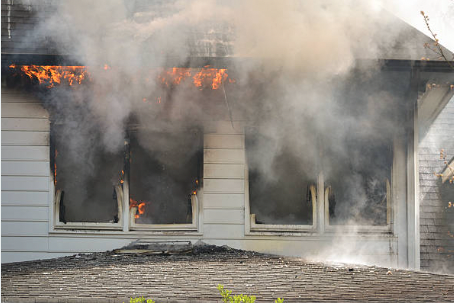A fire in your home can be one of the most traumatic experiences. Beyond the visible destruction, smoke, soot, and water damage from firefighting efforts can leave lasting impacts. That’s where fire damage repair comes in—a critical process to restore safety, comfort, and structure to your property.
In this blog, we’ll explain:
- What fire damage repair includes
- How the process works
- The types of damage involved
- And why acting quickly matters
🔹 What Is Fire Damage Repair?
Fire damage repair refers to the process of cleaning, restoring, and rebuilding a property after it has been damaged by fire and smoke. It involves much more than replacing burnt materials—it includes addressing structural damage, removing smoke odor, and preventing mold caused by water used during firefighting.
🔹 Types of Fire Damage That Require Repair
- Structural Damage
- Burned walls, floors, beams, and ceilings.
- Weakened framing or foundation.
- Smoke and Soot Damage
- Smoke residue can cling to walls and ceilings.
- Soot can discolor paint, wallpaper, and furniture.
- Water Damage
- Caused by sprinklers or firefighting hoses.
- Can lead to mold and mildew if not handled quickly.
- Odor Contamination
- Lingering smoke smell that embeds in walls, carpets, and HVAC systems.
🔹 Fire Damage Repair Process: Step-by-Step
- Assessment & Inspection
Professionals inspect the extent of fire, smoke, and water damage. - Board-Up and Roof Tarping
Prevent further damage by securing windows, doors, and the roof. - Water Removal and Drying
Extract water left behind and use dehumidifiers to dry the space. - Smoke and Soot Cleanup
Specialized equipment removes smoke residue from surfaces and air ducts. - Odor Removal
Use of air scrubbers, fogging, and ozone treatments to eliminate smoke odor. - Sanitizing & Disinfection
Clean surfaces to prevent bacteria and mold growth. - Reconstruction
Replace drywall, flooring, roofing, and other structural elements.
🔹 Why Fast Fire Damage Repair Is Critical
- Prevents mold growth from water left behind
- Stops further structural decay
- Eliminates harmful toxins from soot and smoke
- Restores indoor air quality
- Reduces restoration costs when addressed early
🔹 DIY vs. Professional Fire Damage Repair
While minor cleanup can be handled by homeowners, serious fire damage requires licensed professionals with experience in:
- Hazardous material handling
- Smoke deodorization techniques
- Structural integrity restoration
- Insurance documentation and billing
Tip: Always contact your insurance company immediately after a fire and work with a certified fire restoration company for smoother claims.
✅ Final Thoughts
Fire damage repair is not just about fixing what was burned—it’s about making your home safe and livable again. A proper restoration plan addresses visible damage, hidden hazards, and emotional peace of mind. If your property has suffered fire damage, don’t delay—contact a trusted fire restoration expert to start the recovery process today.

